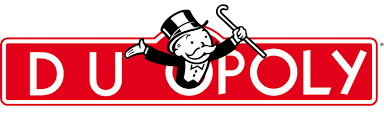Many Battlefronts In War Against Duopoly
Many Battlefronts In War Against Duopoly
It’s easy to bemoan the presence of two giants, Google and Facebook— aka the duopoly — as the demise of digital advertising. What makes things worse is that the rest of the ecosystem isn’t engaged as a united front against them, but simultaneously busy squabbling among themselves.

There are five main factions in the rest of the ecosystem: advertisers, demand-side companies, supply-side companies, publishers — and of course, everyone’s favorite, agencies.
The main schism in the rest of the ecosystem is straight down the middle between the supply side and demand side, cutting the market into two equal-ish parts. Unfortunately, it’s not as simple as saying that it’s two halves against each other, as there are finer and no less vicious cracks in each respective half.
On the demand side, you have the advertiser pitted against various tech partners like demand-side platforms, automation platforms, data management platforms and attribution partners. On the supply side, there’s the publisher versus the supply-platforms and their cohort of partners. To make things even noisier, you have agencies roaming throughout both halves taking potshots and whatever spoils they can.
Two things are universal between all five parties. First, each has survival/independence as their main motivation. Secondly, each is asking the same question of the other four: “Why are you here taking a piece of the meager spoils? What exactly do you do to make the situation better?”
Each of these five has its own unique life-threatening issue that they need to conquer:
Advertisers: If they don’t use their marketing budgets efficiently and gather as much useful marketing intelligence as they can, they will lose out to their more adroit competitors.
Demand-side companies: Their battle is on two fronts. First, as advertisers become more knowledgeable about the landscape, they threaten to take more capabilities in-house. Simultaneously, when the supply-side companies make a move that tips the balance of power towards their half, the demand side loses a precious fraction of the available take.
Supply-side companies: One would be forgiven for thinking that the main battle for them is with the demand-side companies. Alas, no. There is also a skirmish with those publishers that share their half of the ecosystem. From the beginning, the credo of supply-side companies was to help publishers monetize their traffic. Analogous to wiser advertisers, more-educated publishers are now pressing supply-side companies on transparency and accountability.
Publishers: At best, their battle is one for independence, at worst it’s for survival. This is visible to the outside world, as popular titles are constantly being folded into larger conglomerates (for economies of scale) or simply going broke. While they do have the luxury of choosing between pay for services, living off advertising or a hybrid of both, that turns out to be more of a curse than a blessing.
Agencies: Literally stuck in the middle, it seems that they get it from all angles, constantly having to demonstrate their value.
Everyone needs all the allies they can get, but allegiances can only properly function on a foundation of unshakable trust, which of course isn’t the status quo at the moment. Therefore the situation in the rest of the ecosystem among these five parties is rife with mistrust, anxiety and downright paranoia.
As if that wasn’t enough, let’s remember that this is just the various tiffs going on in the rest of the ecosystem. These spats are playing out at the feet of the two giants, with an emerging third giant entering the fray.
Big picture: this is just one of a few battles in the war. At stake is the question of independence, if not survival itself.
At least if there was peace between demand and supply, it would at least lend focus to the fight against the duopoly.
(17)

